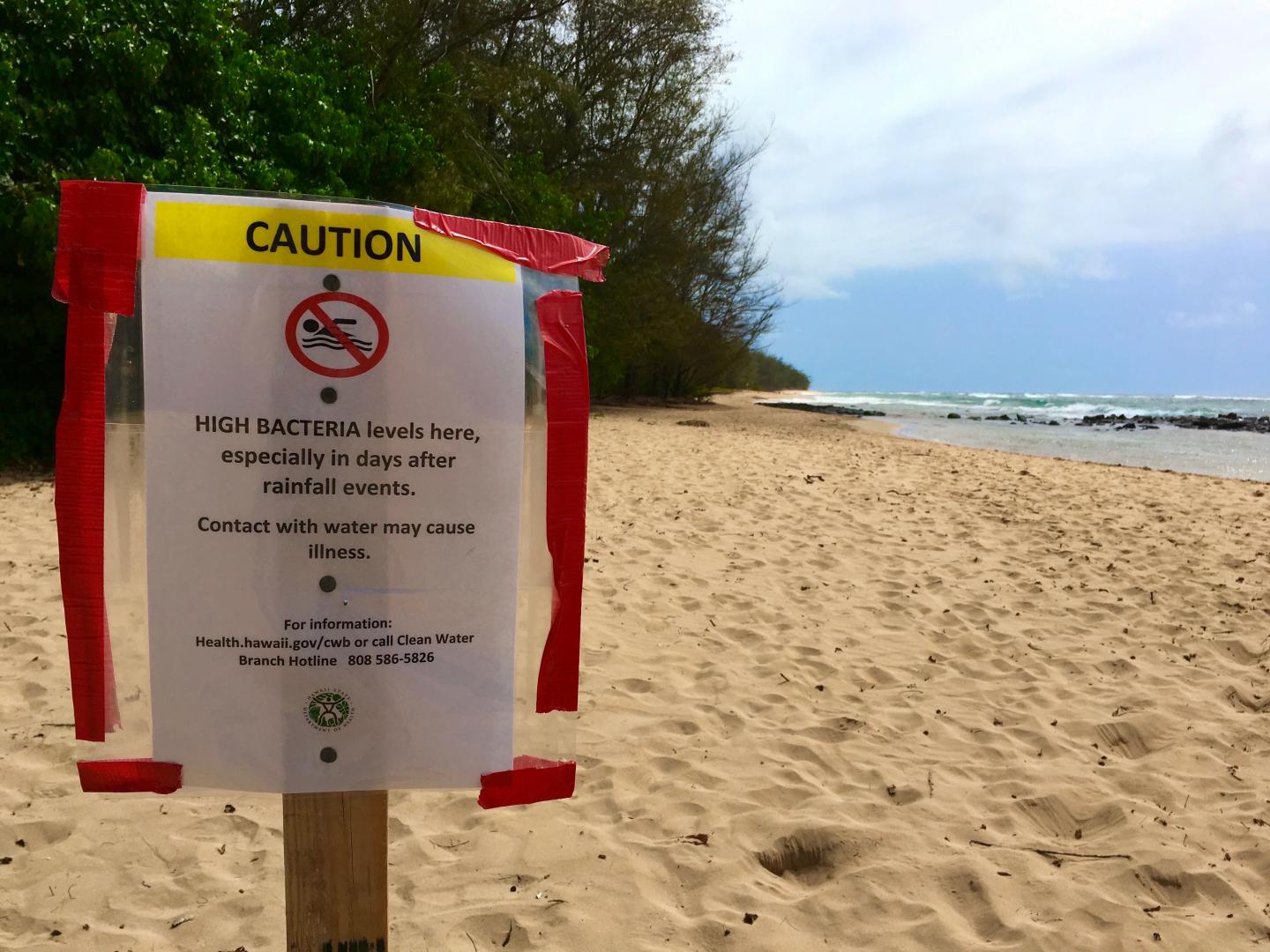Scientists use a powerful microbial detection device to show that suggestions of sewage in Kauai’s watershed were mostly false positives

Credit: Eric Dubinsky/Berkeley Lab
One of the first things that comes to mind when you think of Hawaii are warm, tropical beaches with inviting, clear water. In fact, favorable beach water quality is the lifeblood for Hawaii’s $18 billion annual tourist industry, the largest single contributor to the state’s economy. So, it comes as no surprise that Hawaii water officials continuously monitor for sources of contamination that could threaten their main attraction.
For years, routine testing has shown that watersheds of the Mahaulepu Valley and Waikomo Stream in southeast Kauai frequently contain high counts of potentially pathogenic fecal indicator bacteria (FIB). Though past investigations have concluded that the FIB are not being introduced into the water via sewage leaks or illegal sewage dumping, the Hawaii Department of Health (DOH) remained concerned about the source. To better understand the cause of the high FIB counts, the DOH commissioned a study by Lawrence Berkeley National Laboratory (Berkeley Lab) microbial ecologists Gary Andersen and Eric Dubinsky.
The duo is frequently invited to lead microbial water assessment projects thanks to their expertise and unparalleled toolkit, which centers around a credit card-sized microbial detection technology called the PhyloChip. Invented by Andersen and others at Berkeley Lab in 2008, the PhyloChip has been used previously to monitor water in the San Francisco Bay Area, tropical waters around coral reefs, and throughout the city of Singapore.
After analyzing samples from 13 inland and coastal sites taken over the course of one year, the scientists concluded that there was no detectable human sewage in the Mahaulepu watershed, nor was there a significant presence of livestock or avian wildlife fecal matter. Two stream sites within the watershed did show isolated incidences of pig and cow fecal contamination, yet the popular beach area downstream from these sites was clean.
“The PhyloChip is able to rapidly profile the entire microbial community present in the water samples and use this information to detect bacteria that are unique to specific animal or human sources,” said Dubinsky, who is also a project scientist in the University of California Berkeley’s Department of Environmental Science, Policy & Management. “Unlike conventional fecal contamination tests, which use a handful or even just a single species to identify the potential for contamination, our approach uses a diverse set of hundreds of different bacteria that are characteristic of each fecal source. At the same time, it can detect nearly 60,000 species of bacteria and archaea, meaning that we can find dangerous microbes present in a water source even if we don’t anticipate them.”
In the neighboring Waikomo watershed – an area that includes Poipu beach, one of the island’s most popular tourist destinations – Dubinsky and Andersen found only minimal evidence of human fecal contamination. The PhyloChip data suggested that one beach had been contaminated with human fecal matter by a nearby hotel’s sewage well. Interestingly, this site had not been identified by past monitoring with traditional FIB tests.
Having allayed fears of widespread sewage system leaks, the scientists propose that the historically high FIB levels are a misleadingly alarming consequence of using old-school testing methods, none of which were designed for use in the tropics.
Dubinsky and Andersen believe that the presence of FIB in Kauai’s water is likely due to enterococci and Clostridium perfringens – a genus and species, respectively, that typically grow inside animal digestive tracts – flourishing in the environment outside of their typical biological hosts. They note that this phenomenon is common in tropical regions, thanks to the heat and humidity, and the natural presence of these bacteria in water does not necessarily put people at greater risk of gastrointestinal illness. However, many standard fecal bacteria detection tests employed to monitor swimming holes and beaches use these organisms as markers of dangerous contamination.
“The PhyloChip is able to achieve an extremely high level of confidence in detecting specific sources of contamination through a unique process that examines over a million DNA sequences simultaneously,” said Andersen, a senior scientist in the Biosciences Area.
In 2017, the PhyloChip caught the interest of the US Environmental Protection Agency (EPA). Ongoing studies between the Andersen lab and at the EPA are using the technology to evaluate agricultural fecal runoff in multiple watersheds through the U.S., including Nebraska, Kansas, Georgia, Louisiana, Washington, and Massachusetts. “Our goal is to replicate and review data produced through the PhyloChip method so that we can compare it to other source-tracking methods,” said Steven Baker, the co-lead researcher on this project from EPA Region 7. “Increasing our confidence in identifying when specific sources of fecal contamination occur strengthens our ability to make the correct management decisions and helps us to prioritize where to place our mitigation efforts.”
On top of its environmental monitoring applications, the PhyloChip could enable advances in understanding and improving human health. Second Genome, Inc. has licensed the technology to discover and develop therapeutics based on targets identified through the examination of the human microbiome.
###
Andersen and Dubinsky’s study was funded by the Hawaii DOH.
Founded in 1931 on the belief that the biggest scientific challenges are best addressed by teams, Lawrence Berkeley National Laboratory and its scientists have been recognized with 13 Nobel Prizes. Today, Berkeley Lab researchers develop sustainable energy and environmental solutions, create useful new materials, advance the frontiers of computing, and probe the mysteries of life, matter, and the universe. Scientists from around the world rely on the Lab’s facilities for their own discovery science. Berkeley Lab is a multiprogram national laboratory, managed by the University of California for the U.S. Department of Energy’s Office of Science.
DOE’s Office of Science is the single largest supporter of basic research in the physical sciences in the United States, and is working to address some of the most pressing challenges of our time. For more information, please visit https:/
Media Contact
Aliyah Kovner
[email protected]
Original Source
https:/



